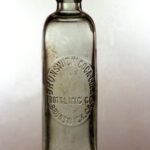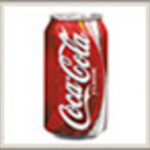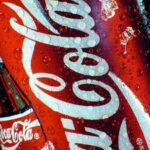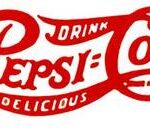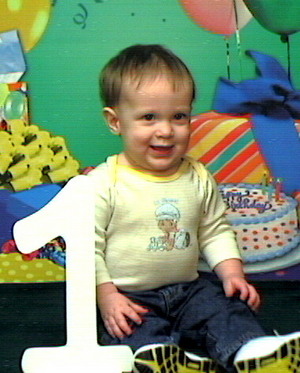Now, if I’m lucky, you have taken the time to read my article, History of Advertising and its Affect on Popular Culture. If not, kick back and relax because it is lengthy. This article further demonstrates the relationship between advertising and popular culture by examining the history of Coca-Cola, the advertising they use, and where the company stands today.
For nostaligic value, as you read this, pay close attention to the slogans that are presented throughout the timeline. Which one(s) do you remember? Was there anything in particular that made that ad memorable over the others? If so, why did it stand out? Relating your own memories of the ad campaigns to the popular culture of the time period will aid your understanding that it advertising serves as both a direction and a reflection of popular culture.
The Emergence of Advertising in America reports that when Coke was first developed and introduced to the public in the 1880’s, it was marketed for medicinal uses, as a sort of cure-all for headaches, and revival. In 1901, Coca-Cola’s advertising budget had reached an incredible $100,000.
Eye Witness to History’s article regarding advertising in the 1920’s briefly discusses the Coca Cola brand, and maintains that Coca-Cola had changed its tune in hopes of creating brand loyalty and began to advertise its product as a “fun food” and “refreshment. In fact, their 1929 slogan, “The Pause that Refreshes” remains at the number two spot in the top 100 advertising slogans, as according to AdAge.com. During this time, the decision on whether or not to stock the soda products at a store could make or break a business. Because of its successful advertising strategies, Coca-Cola remains one of the most well-known soda products of today.
According to the chapter named “A Symbol of Friendship” found in the Coca-Cola Chronicle, the onset of the war presented Coca-Cola with a whole new set of issues, as it was then being bottled in 44 different countries-on opposing sides of the fight. After the USA entered the war in 1941 an order came down “to see that every man in uniform gets a bottle of Coca-Cola for 5 cents, wherever he is and whatever it costs the Company.” When the request came, there was also an order issued by General Eisenhower to send the equipment for 10 bottling facilities to the assist in the war effort. Along with this, 3 million filled bottles of Coke, and the means with which to make that same amount twice monthly were shipped to soldiers. By the time six months had elapsed, bottling plants were being erected as close to battle as possible to ensure that soldiers never lacked in Coca-Cola. Over the course of the war, more than 5 billion bottles of the soda were consumed by the military servicemen. Because of the locality of the new bottling plants, many people were able to experience Coca-Cola for the first time; giving Coca-Cola an even larger grasp on a global market after the war was over and peace had been achieved.
The next chapter of the Coca Cola Chronicle, “Moving with the Times” states famous artists like Norman Rockwell were enlisted to do Coca-Cola’s print ads. The first live television show to be sponsored by Coca-Cola, “Coke Time” aired on Thanksgiving Day 1950. When advertising switched from sponsored shows, to the magazine concept, Coca-Cola was able to reach a broader market of people over the years, and used many famous people to endorse the product.
In 1955, as a response to high demands for more product choices, Coca Cola launched 10, 12, and 26 ounce sized metal cans. In addition to Coca-Cola, the company released Fanta in 1960, and Minute Maid juices shortly thereafter. Another one of Coke’s best selling products, Sprite, came about in 1961. The first low calorie soda TAB, was released in 1963. Slogans used in advertising during this era were: “Sign of Good Taste,” “Be Really Refreshed” and “Go Better Refreshed.”
1971, the song, “I’d Like to Buy the World a Coke” debuted. Later the song flopped.
The Library of Congress article: Fifty Years of Coca-Cola Television Advertisements: Highlights from the Motion Picture Archives at the Library of Congress lists the following advertising slogans which made their debuts between 1969 and 1999.
1969: “It’s the Real Thing”
1974: “Look Up America”
1976: “Coke Adds Life”
1979: “Have a Coke and Smile”
1982: “Coke is It”
1986: “Catch the Wave (Coca-Cola)”
1987: “When Coca-Cola Is a Part of Your Life, You Can’t Beat the Feeling”
1988: “You Can’t Beat the Feeling”
1989: “Official Soft Drink of Summer
1990: “You Can’t Beat the Real Thing”
1993-1999: “Always, Coca-Cola”
The Coca-Cola Heritage Timeline explains that in 1985, Coke is launched into space, becoming the first soft drink available aboard space shuttles. A new formula is released, and subsequently rejected, as the original classic formula is brought back due to popular demand. The following year, Coke celebrates 100 years of customer satisfaction.
In 1990, Coke is launched in Germany. The World of Coke, an attraction detailing the company history opens in Atlanta, GA.
1993 brings the Coca Cola Polar Bears first appearance in advertising, and changes are made to the 20 ounce bottle, allowing it to be distinguished from other brands.
Barq’s Root Beer and Ice Cream joins the Coke family in 95.
Coke becomes a major sponsor of the 1996 Summer Olympics, hosted in Atlanta, GA.
In 1997, Coke gives grants to students in China for college as part of its Project Hope Imitative. The next year, the Pepsi chairman and CEO donates his salary for use in scholarships for his employee’s children.
Dasani Water joins the Coke crew in 1999. Other beverages to join the family include Powerade Sports Drink, and Cadebury Schweepe’s beverages.
Coca-Cola now serves over 400 different brands in nearly every part of the globe. Coca-Cola has grown to the world’s most omnipresent brand, with more than 1.4 billion beverage servings sold each day. In 2001, Coke developed the fridge pack, a longer and thinner version of the 12 pack specifically designed to better fit in a refrigerator, occupying less space for the same amount of product. The following year marked the 74th consecutive year that Coca Cola sponsored the Olympics; and Coca Cola became the second largest sponsor of the new show American Idol, which has proved to become quite a cultural hit. In 2005, new bottles were introduced for packaging, and Olympic sponsorship was extended for another 15 years. Last year in 2006, the company celebrated its 120th birthday, and launched a program in the United States called Coca Cola Rewards, an online incentive program. The “Make Every Drop Count” campaign also began, in order to remind the public that Coca Cola offers many more beverages besides the classic soda. More recently, Coke completed the acquisition of Glauceau, the company that produces Vitamin Water which formally distributed by Snapple.
Starting with one product and working their way up to a full product line featuring everything from the classic soda to energy drinks, sports drinks, water, coffee and tea means ultimate success, and an increased chance that even if you loathe the original soda product, you still have something owned by Coca-Cola in your refrigerator. So whatever your chosen Coca-Cola owned poison is, go grab yourself a nice cold glass (or hot cup) and enjoy!
Sources Cited:
Various Contributors. “EAA: Timeline”. Emergence of Advertising in America: 1850-1920 John W. Hartman Center for Sales, Advertising & Marketing History.
Author, Unknown. “Advertising in the 1920s,” EyeWitness to History.
Garfield, Bob. “Ad Age Advertising Century: Top 100 Advertising Campaigns”. Advertising Age.
Author, Unknown. “Coca-Cola-Heritage – The Chronicle of Coca-Cola – A Symbol of Friendship”. The Coca-Cola Company.
Author, Unknown. “Coca-Cola-Heritage – The Chronicle of Coca-Cola – Moving with the Times”. The Coca-Cola Company.
Various Contributors. “Coca-Cola Television Advertisements: Timeline”. Library of Congress Archives.
Author, Unknown. “Coca-Cola Heritage Timeline”. The Coca-Cola Company.
Author, Unknown. “www.coca-cola.com”. The Coca-Cola Company.
Author, Unknown. “Makeeverydropcount.com: Home”. The Coca-Cola Company.
Weber, Harry R. “ABC News: $4.1 Billion Cash Deal: Coke buys Vitaminwater.” ABC News.
